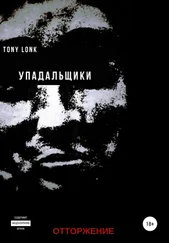Clearly, the Western Communists were falling behind the curve. Within weeks of the dispatch of the letter to Thorez, on June 2nd, Moscow was establishing commercial treaties with its eastern European neighbours and satellites, part of a concerted reaction against the Marshall Plan and the threat it posed to Soviet influence in the region. The policy of cooperation, pursued in Prague, Paris and Rome and hitherto tacitly approved by Stalin, was swiftly being replaced by a retreat to the strategy of confrontation represented by Zdanov’s promulgation of the theory of two irreconcilable ‘camps’.
To implement the new approach, Stalin called a meeting in Szklarska Poręba, in Poland, for late September 1947. Invited to take part were the Communist parties of Poland, Hungary, Romania, Bulgaria, Czechoslovakia, Yugoslavia, France, Italy and of course the Soviet Union. The ostensible purpose of the meeting was to establish the ‘Cominform’—the Communist Information Bureau: a successor to the Communist International whose task would be to ‘coordinate’ international Communist activity and improve communication between Moscow and the satellite parties. But the real goal of both the meeting and the Cominform (which only ever met three times and was disbanded in 1956) was to re-establish Soviet dominion within the international movement
Just as he had done within the Bolshevik Party itself twenty years before, Stalin set out to penalize and discredit the ‘rightist’ deviation. At Szklarska Poręba the French and Italian representatives were subjected to patronizing lectures on revolutionary strategy from the Yugoslav delegates Edvard Kardelj and Milovan Djilas, whose exemplary ‘leftism’ was singled out for praise by Zdanov and Malenkov, the Soviet delegates. The Western Communists (along with the representatives of the Czech and Slovak Parties for whom the criticism was clearly intended as well) were taken quite by surprise. Peaceful co-existence, of the kind they had been pursuing in domestic politics, was at an end. An ‘anti-imperialist democratic camp’ (in Zdanov’s words) was forming and a new line was to be followed. Henceforth Moscow expected Communists to pay closer attention and subordinate local considerations to Soviet interests.
Following Szklarska Poręba, Communists everywhere switched to confrontational tactics: strikes, demonstrations, campaigns against the Marshall Plan and—in eastern Europe—acceleration of the take-over of power. The Central Committee of the French Communist Party met in Paris on October 29th-30th 1947 and officially inaugurated a campaign of denigration directed at their erstwhile Socialist allies. The Italian Communists took a little longer to make the switch, but at its January 1948 Congress the Partito Communista Italiano (PCI) too adopted a ‘new course’, whose focus was to be ‘the struggle for peace’. The western European Communists certainly suffered as a consequence—they were marginalized in domestic affairs and in the Italian case lost heavily in the April 1948 general elections, in which the Vatican and the US Embassy intervened massively on the anti-Communist side. [38] The PCI actually increased its vote somewhat at the 1948 elections, but only at the expense of the Socialists, who lost heavily. The victorious Christian Democrats outscored the combined Left by over four million votes.
But it didn’t matter. In Zdanov’s ‘two camps’ theory, Communists in the Western camp were now consigned to a secondary, spoiler role.
It might be thought that the Yugoslavs’ hyper-revolutionism, hitherto an impediment to Stalin’s diplomacy, would now be an asset—and so it had seemed at Szklarska Poręba, where the Yugoslav Party had been given the starring role. Certainly the French, Italian and other delegates never forgave the Yugoslavs for their condescending air of superiority and privilege at Szklarska Poręba: following the Soviet-Yugoslav split Communists everywhere were only too pleased to condemn the ‘Tito-ist deviation’ and needed little Soviet encouragement to pour obloquy and scorn upon the disgraced Balkan comrades.
Instead, however, the Tito-Stalin rift was publicly initiated by Stalin’s condemnation of the Balkan Federation idea in February 1948 and the Soviet cancellation of trade negotiations, followed by the recall from Belgrade of Soviet military and civilian advisers the following month. It was pursued through a series of formal communications and accusations in which both sides claimed the best of intentions, and culminated in Tito’s refusal to attend the forthcoming second Cominform conference. The split was then consummated at that conference, on June 28th 1948, with a formal resolution expelling Yugoslavia from the organization for its failure to acknowledge the leading role of the Red Army and the USSR in the country’s liberation and socialist transformation. Officially, Belgrade was charged with conducting a nationalist foreign policy and pursuing incorrect domestic policies. In fact, Yugoslavia represented the international equivalent of a ‘left opposition’ to Stalin’s monopoly of power and a conflict was inevitable: Stalin needed to break Tito in order to make very clear to Tito’s fellow Communists that Moscow would brook no dissent.
Tito, of course, was not broken. But both he and his country were more vulnerable than they seemed at the time, and without growing Western backing Tito would have been hard put to survive the Soviet economic boycott—in 1948 46 percent of Yugoslav trade was with the Soviet bloc, a figure that was reduced to 14 percent one year later—and credible threats of Soviet intervention. The Yugoslavs certainly paid a high rhetorical price for their opinionated actions. In the course of the next two years Cominform attacks were steadily ratcheted up. In the well-oiled lexicon of Leninist abuse, Tito became ‘Judas Tito and his abettors’, ‘the new Czar of the Pan-Serbs and of the entire Yugoslav bourgeoisie’. His followers were ‘despicable traitors and imperialist hirelings’, ‘sinister heralds of the camp of war and death, treacherous warmongers and worthy heirs of Hitler’. The Yugoslav Communist Party was condemned as a ‘gang of spies, provocateurs and murderers’, ‘dogs tied to American leashes, gnawing imperialist bones and barking for American capital’.
It is significant that the attacks on Tito and his followers coincided with the full flowering of the Stalinist personality cult and the purges and show trials of the coming years. For there is little doubt that Stalin truly did see in Tito a threat and a challenge, and feared his corrosive effect on the fealty and obedience of other Communist regimes and parties. The Cominform’s insistence, in its journals and publications, on the ‘aggravation of the class struggle in the transition from capitalism to socialism’ and on the ‘leading role’ of the Party risked reminding people that these had been precisely the policies of the Yugoslav Party since 1945. Hence the accompanying emphasis on loyalty to the Soviet Union and Stalin, the rejection of all ‘national’ or ‘particular’ roads to Socialism and the demand for a ‘redoubling of vigilance’. The second Stalinist ice age was beginning.
If Stalin went to such trouble to assert and re-assert his authority in eastern Europe, it was in large measure because he was losing the initiative in Germany. [39] It was no coincidence that Soviet advisers were withdrawn from Yugoslavia on March 18th 1948, just forty-eight hours before General Sokolovski walked out of the Allied Control Council meeting in Germany.
On June 1st 1948 the Western Allies, meeting in London, announced plans to establish a separate West German state. On June 18th a new currency, the Deutsche Mark , was announced; three days later it was placed in circulation (the banknotes had been printed in great secrecy in the US and transported to Frankfurt under US Army escort). The old Reichsmark was withdrawn, with every German resident entitled to exchange just forty of them for the new marks at a 1:1 ratio, thereafter at a ratio of 10:1. Initially unpopular (because it destroyed savings, pushed up real prices and put goods beyond most people’s reach) the currency was quickly accepted, as stores filled up with goods that farmers and traders were now willing to sell at fixed prices for a reliable medium of exchange.
Читать дальше












